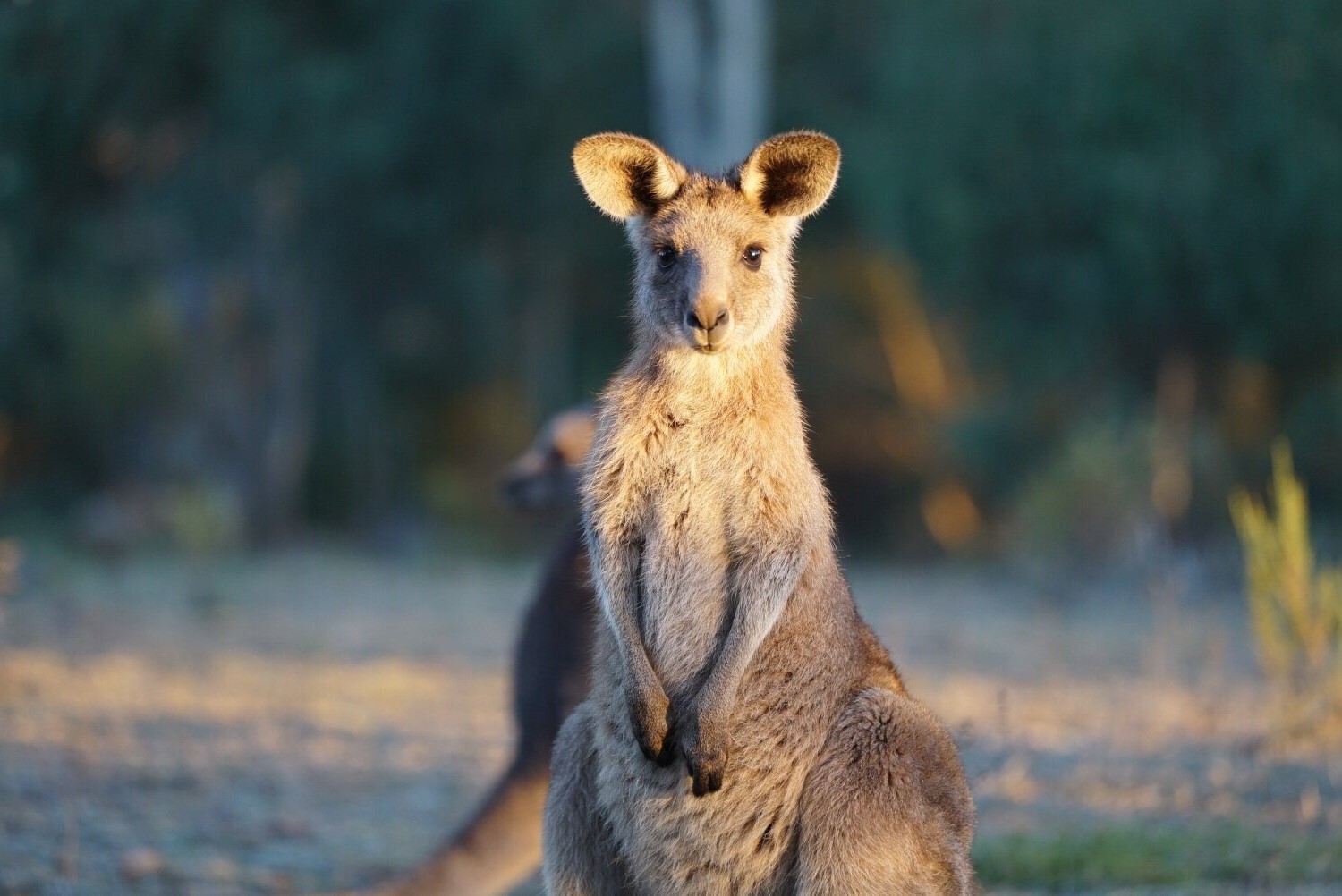
Ever wondered about the fascinating world of kangaroos? These hopping marvels are more than just Australia's iconic symbol; they're creatures brimming with surprises. Kangaroos possess some of the most intriguing behaviors and physiological features in the animal kingdom. From their unique way of moving to their extraordinary parenting techniques, there's a lot to learn about these marsupials. Have you ever heard, for instance, how kangaroos can pause their pregnancy? Or how about their incredible ability to cover vast distances with minimal effort? Buckle up, because we're about to hop into 20 incredible kangaroo facts that will leave you astounded. Whether you're an animal enthusiast or just curious, these insights into the world of kangaroos are sure to pique your interest and maybe even challenge what you thought you knew about these fascinating creatures.
Key Takeaways:
- Kangaroos are fascinating creatures with powerful legs for jumping and defense, a unique reproductive system, and complex social behaviors, making them an iconic symbol of Australia's wildlife.
- Conservation efforts and public awareness are crucial to protecting kangaroos from threats like habitat loss, hunting, and climate change, ensuring their future as a beloved part of Australian culture and economy.
Kangaroos Have Powerful Legs
Kangaroos are renowned for their strong hind legs, which they use not only for jumping but also for defense. These powerful limbs allow them to leap distances of up to 3 meters in a single bound and reach speeds of over 60 kilometers per hour.
-
Kangaroos can jump up to 9 meters in one leap when they need to cover ground quickly or escape predators.
-
Their muscular legs aren't just for speed and distance; kangaroos can also deliver a powerful kick to deter threats.
Unique Reproductive System
Kangaroos have a fascinating approach to reproduction, featuring a process known as embryonic diapause. This allows the female to pause the development of her embryo until conditions are favorable for the joey's survival outside the pouch.
-
Female kangaroos can be perpetually pregnant, giving birth to a new joey shortly after the previous one leaves the pouch.
-
The mother has the ability to nurse two joeys at different developmental stages simultaneously, providing each with a different composition of milk.
Kangaroos Are Social Animals
Contrary to the solitary image some may have of kangaroos, they are actually quite social creatures. They live in groups known as mobs, which can consist of up to 100 members, depending on the availability of resources like food and water.
-
Mobs provide safety in numbers, reducing the risk of predator attacks on individual kangaroos.
-
Social hierarchy within these groups is established through boxing, where kangaroos spar using their forepaws and powerful legs.
Kangaroos Have a Unique Diet
Kangaroos are herbivores, primarily feeding on grasses and small shrubs. Their diet is not only interesting because of what they eat but also how they digest their food.
-
They are equipped with a chambered stomach similar to that of cows, which allows them to ferment food and extract maximum nutrients.
-
Kangaroos require very little water to survive, an adaptation that makes life in arid Australian environments possible.
Adaptations to the Australian Landscape
Kangaroos have evolved several unique adaptations that allow them to thrive in Australia's challenging environments, from the arid outback to forested areas.
-
Their long tails are used for balance when hopping and as a fifth limb when moving slowly.
-
Kangaroos can go for months without drinking water, relying on moisture found in their food to stay hydrated.
Kangaroo Communication is Complex
Communication among kangaroos involves a variety of sounds, movements, and even scents. They have developed an intricate system to maintain social bonds and warn each other of danger.
-
Mothers and joeys communicate through a series of clicks, which helps them stay connected even in dense vegetation.
-
When threatened, kangaroos thump their feet on the ground to alert others in the mob of potential danger.
Conservation Status of Kangaroos
While kangaroos are not currently endangered, their populations face threats from habitat loss, hunting, and climate change. Conservation efforts are in place to ensure these iconic Australian animals continue to thrive.
-
Several species of kangaroo are protected under Australian law, which regulates hunting and aims to preserve their natural habitats.
-
Climate change poses a significant threat to kangaroo populations by altering their habitats and the availability of food and water.
Kangaroos in Culture and Economy
Kangaroos hold a special place in Australian culture, appearing on the country's coat of arms, currency, and even as mascots for sporting events. They also play a role in the economy, both through tourism and the sale of kangaroo products.
-
Kangaroo leather is highly valued for its strength and light weight, making it ideal for sports shoes and gloves.
-
Tourism centered around kangaroo sightings and interactions contributes significantly to local economies, especially in rural areas.
Kangaroos and Their Nighttime Activity
Kangaroos are primarily nocturnal and crepuscular, meaning they are most active during the night and at twilight. This behavior helps them avoid the hottest parts of the day in their often arid habitats.
-
Their large eyes are adapted to low light conditions, allowing them to forage and navigate in the dark.
-
During the day, kangaroos rest in shaded areas to conserve energy and avoid heat stress.
The Future of Kangaroos
As Australia continues to change, both through natural processes and human activity, the future of kangaroos hangs in a delicate balance. Conservation and management efforts are crucial to ensuring that kangaroos remain a symbol of Australia's unique wildlife.
A Leap into Kangaroo Lore
Kangaroos, those iconic jumpers from Down Under, aren't just another animal; they're a fascinating blend of unique biology and cultural significance. We've hopped through 20 incredible facts about kangaroos, uncovering their environmental adaptability, remarkable maternal care, and their undeniable impact on Australian culture. From their powerful hind legs that propel them over vast distances to their complex social structures, kangaroos offer a glimpse into the wonders of evolution and biodiversity. As symbols of Australia, they remind us of the importance of conservation and the need to protect our planet's unique creatures. Next time you spot a kangaroo, either in the wild or at a zoo, remember these facts. You'll appreciate these remarkable animals even more, knowing the depth of their story and the secrets they carry in their leaps across the Australian landscape.
Frequently Asked Questions
Was this page helpful?
Our commitment to delivering trustworthy and engaging content is at the heart of what we do. Each fact on our site is contributed by real users like you, bringing a wealth of diverse insights and information. To ensure the highest standards of accuracy and reliability, our dedicated editors meticulously review each submission. This process guarantees that the facts we share are not only fascinating but also credible. Trust in our commitment to quality and authenticity as you explore and learn with us.


